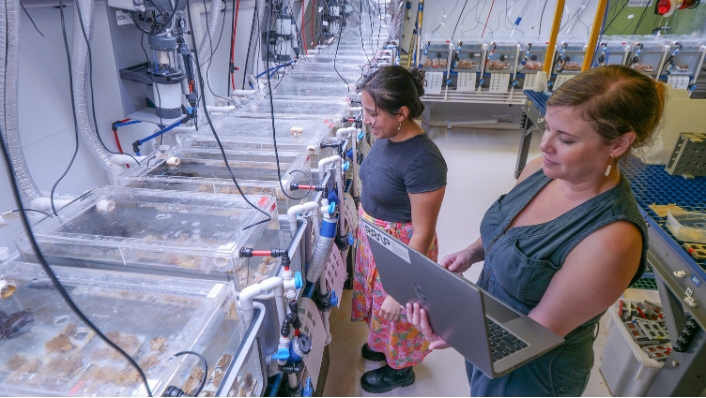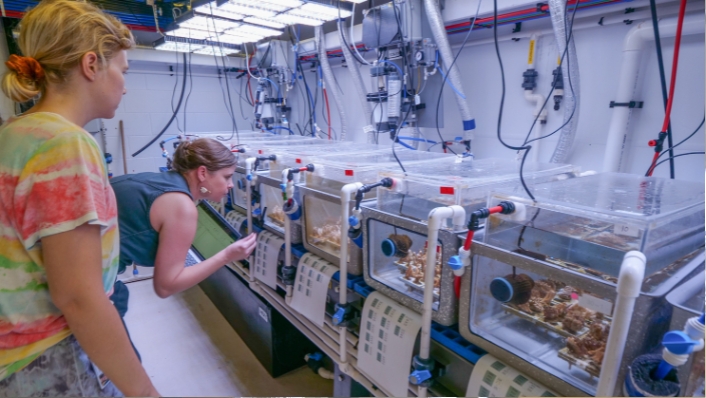Attempts to restore reefs with coral seeding will be more successful if new corals are better able to cope with elevated temperatures already experienced on the reef and likely to further intensify in the future. The science underpinning the breeding of animals and plants, based on centuries of evolutionary biology and genetics, provides a sound framework for the selection of specific coral traits.
The traits we want to promote are those that give young corals the best chance of surviving under ambient reef conditions and extreme heat events which occur with increasing severity and frequency. Important survival traits could be growth, tolerance for heat stress, and the types of microalgae symbionts with which they partner.
When selecting desirable traits the parentage of the organism is key knowledge, which has traditionally been obtained by complicated pedigree breeding designs. We are using new molecular techniques that bypass these breeding designs and instead infer the relatedness of individuals based on their DNA.
This is a much quicker method, thus turbo-charging our understanding of how to select corals with enhanced performance, because we can estimate relatedness genomically without individual breeding designs. This approach also enables genetic monitoring to evaluate the benefits and risks of large deployments of coral offspring for reef restoration purposes.
This research is launching at the same time as the Pilot Deployments Program (PDP), an ambitious effort to operationalise the technology needed to successfully deploy young corals in large numbers across the Great Barrier Reef. This allows us to monitor the impact of coral deployment on coral reef genetic diversity, and to see how adaptive traits are passed to the next generation for the first time in a reef restoration context.
Founding coral family lines in 2025
To breed and seed corals with desirable traits, we use Acropora colonies who are amongst the survivors of the 2024 mass bleaching event at two reefs in the Northern Great Barrier Reef. These corals have already displayed desirable traits for resisting heat stress.
These corals will be taken to the National Sea Simulator (SeaSim) to spawn. Their larvae will then settle, have their genetic information collected, and ultimately be deployed back onto the reefs from which their parents were collected.
The juvenile corals will then be monitored over the coming months and years using photogrammetry to measure a range of traits. This technique uses cameras to create detailed 3D images, allowing growth of coral juveniles on the reef to be measured over time. This data will begin to reveal the traits in the new generation, which can now be linked back to their parentage and genetic makeup.
Looking to the future: the power of coral genetics
The genetic knowledge of these coral lineages will have many potential uses beyond this spawning season.
-
Most obviously, we can begin to understand which genetic information is associated with which traits, and how these are inherited.
-
We can also monitor genetic diversity within coral populations, which is an important indicator of population health and important for conservation.
-
We can use the data to build genetic reference panels, essentially a library of genetic data specific to Great Barrier Reef coral species. These can be referred to when undertaking other types of genetic studies. The practical upshot is that far less genetic data needs sequencing for future research. These sorts of references can also be used to start understanding how corals across the Reef are related.
Researchers
Dr Holland Elder
Professor Cynthia Riginos
Collaborators
Dr Iva Popovic (population genetics)
Dr Yui Sato (coral aquaculture genetics)
Dr Renata Ferrari (photogrammetry)
This research is supported by:
This research is supported by the Reef Restoration and Adaptation Program (RRAP), funded by the partnership between the Australian Government's Reef Trust.
The page was updated in October 2025


